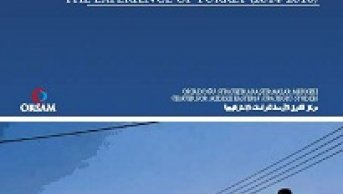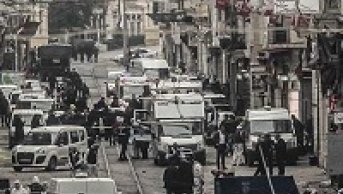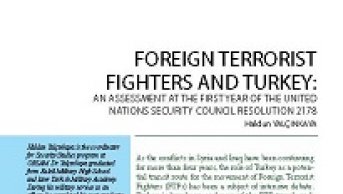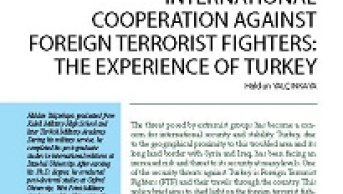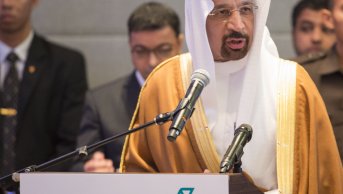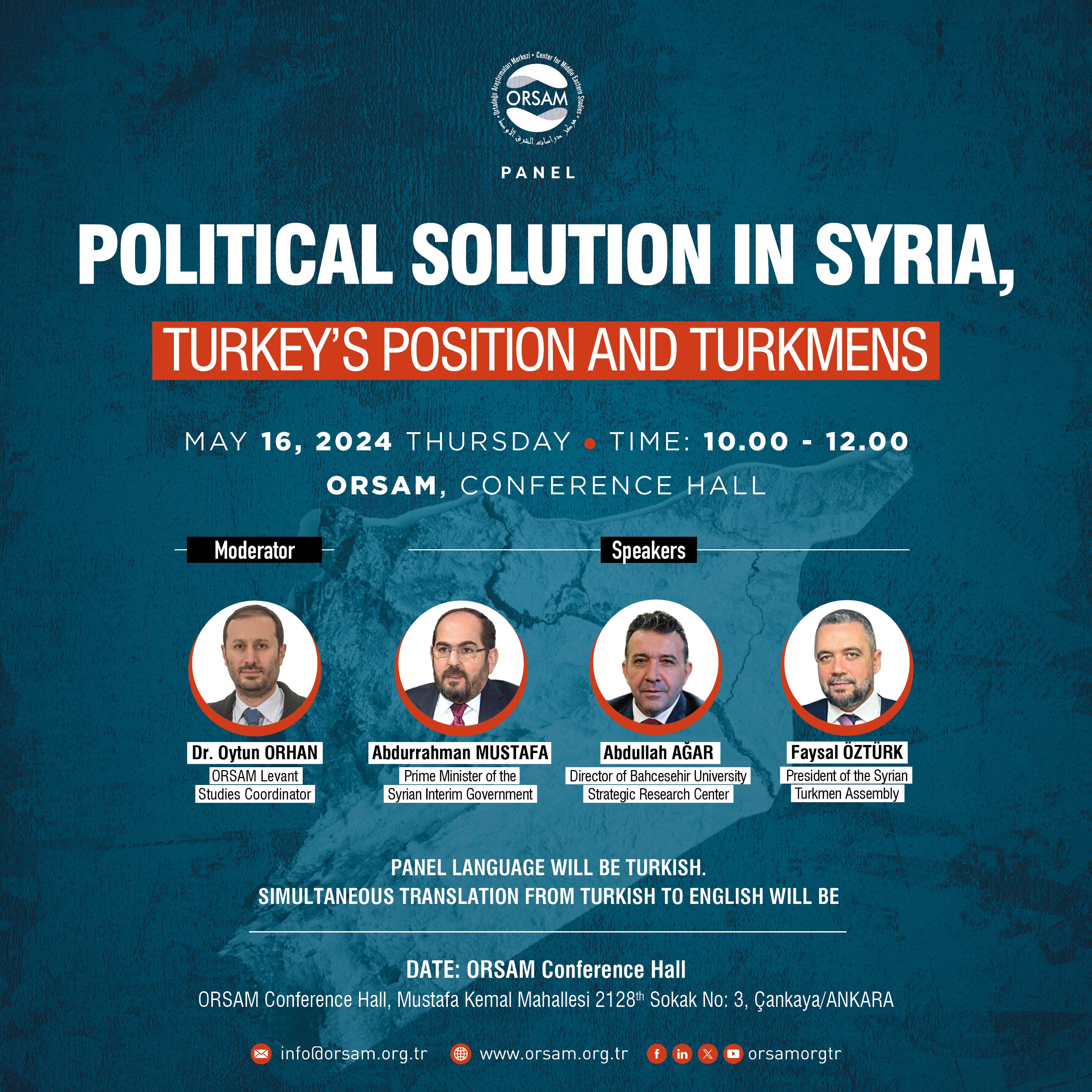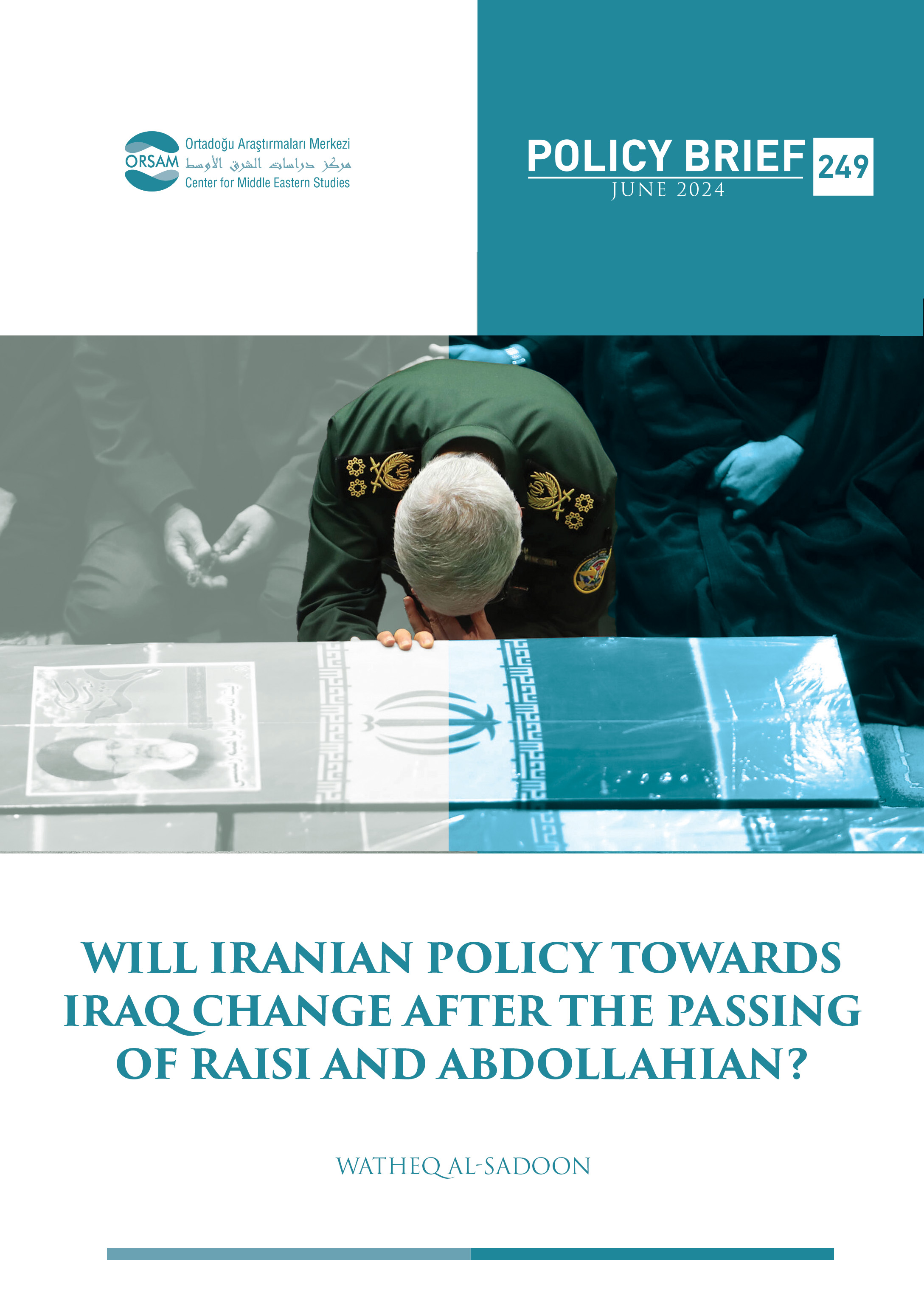The Global Counter-Terrorism Forum and Its Function in the Light of Current Developments
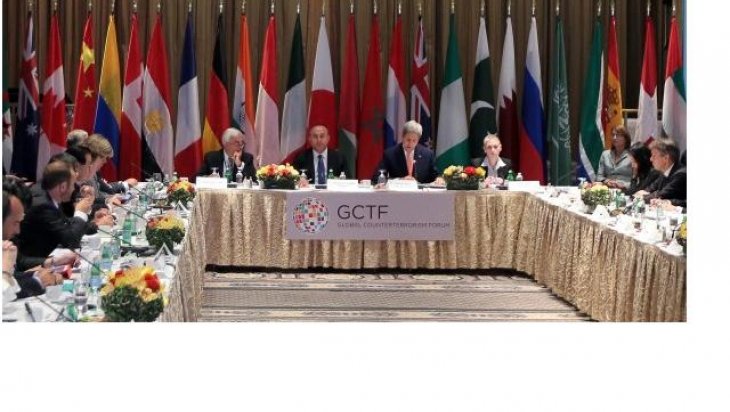
On 24 September 2014, the United Nations Security Council passed a resolution about the “the Violent Extremism”, in the light of current fighting in Iraq and Syria. The resolution contains a series of measures to be taken by the international community about the “Foreign Terrorist Fighters” of ISIS. The details regarding this resolution is to be discussed in another article, and the UN Security Council’s meeting on September 24 took place out of a conventional setting with the participation of 28 states besides its 15 member states. In this meeting, Recep Tayyip Erdoğan, the President of the Republic of Turkey, has made a speech. The topic of this article is the mechanism, which made the UN Security Council meeting possible and is under the co-chairmanships of Turkey and the United States: The Global Counter-Terrorism Forum (GCTF).
The Global Counter-Terrorism Forum (GCTF) was established on 22 September 2011 in New York under the co-chairmanship of the United States and Turkey. The GCTF is not an international organization, where states come together, or a civil society organization. The GCTF is an initiative, which seeks to build a platform for bringing together experts and decision makers from all around the world in order to formulate a non-military approach against the terrorism of the 21st century. Theoretically, this initiative will make possible the identification of urgent needs in the struggle against terrorism, solution for these needs and allocation of resources.
The first question at this point is “Why such an initiative is needed?” The world was introduced to the terrorism on global scale with the 11 September 2001 attacks and has initiated a war against global terrorist organizations, especially Al Qaeda, under the leadership of the United States. During the decade until the launch of the GCTF in 2011, the conventional international relations structures proved to be cumbersome and have limited efficiency against the new threat of terrorism. The conventional structures remained inefficient even in some basic issues such as defining who is a terrorist and what constitutes a terrorist action. Due to these problems, the international community was stuck in initial definition steps, and unable to transition into further steps that involved active struggle. The United Nations and NATO, which were expected to be active, produced no results due to their members’ diverging positions. The most important initiative on this topic before the GCTF was the G-8 Counterterrorism Action Group (CTAG), which was founded in 2003. The failure of the CTAG, which was founded due to the inefficiency of the UN Security Council’s Counter-Terrorism Committee, led to the launch of the CTAG. The growing trend of the global terrorism since 2011 and the unavailing efforts by the international community gave rise to the need for new mechanisms, which did not suffer from cumbersomeness. Time will show whether the GCTF will be able to address this need. However, the initial indicators show promise and positive signals.
It is quite normal that the United States, which fights against global terrorism after the September 11 Attacks, is one of the leaders of the GCTF. The other state that pioneered the launch of the GCTF is Turkey. This actually is a comprehensible situation. Turkey suffered from ASALA in the 1970s and has been suffering from the PKK since the 1980s. These trials have caused Turkey to fight against terrorism in both domestic and international scene for long years and, unfortunately, acquire a great deal of knowledge and expertise. Turkey had to deal with issues such as the lack of international support for its struggle against terrorism, the definition of terrorism and fighting against terrorism without violating the human rights. The issues that are discussed worldwide after the 9/11 had already been in Turkey’s agenda for a long time. Therefore, it is not surprising that Turkey is at the forefront of this kind of initiatives. In this context, it is not a coincidence that NATO’s Center of Excellence for Defence Against Terrorism were established in Ankara. For this reason, it is not a coincidence as well that Turkey takes the lead in the GCTF. In brief, Mrs. Hillary Clinton and Mr. Ahmet Davutoğlu are seen together in the GCTF Launch Event photo, starting the initiative that produced the relatively most efficient results.
The GCTF comes to the fore in Turkey’s public agenda with the meetings in ministerial or higher levels. It is expected that it will evolve into a permanent organization. There are similar examples in history. One of the most obvious examples is the Organization for Security and Co-operation in Europe (OSCE). The process that started in Helsinki in 1975 produced the Treaty on Conventional Armed Forces in Europe (CFE) and caused a breach in the “Iron Curtain”. Then OSCE was founded as an international organization. Even though the GCTF is at its initial stage, it will be institutionalized as it produces solutions that involve concrete results.
After mentioning the GCTF’s launch, it is needed to examine its activities. Therefore it will be easier to comprehend the UN Security Council meeting on 24 September 2014, the resolution that was adopted as a result of this meeting and accordingly the GCTF.
The Global Counterterrorism Forum is based on the UN Global Counter-Terrorism Strategy and seeks to take it much further. It aims to get rid of the clumsiness of the last ten years, while carrying out its function. Moreover, it is important to point out that the GCTF deals with non-military initiatives.
The GCTF has 30 founding members including the European Union: Algeria, Australia, Canada, China, Colombia, Denmark, Egypt, France, Germany, India, Indonesia, Italy, Japan, Morocco, the Netherlands, New Zealand, Nigeria, Qatar, Russia, Saudi Arabia, South Africa, Spain, Switzerland, Turkey, the United Arab Emirates, the United Kingdom, and the United States of America. Moreover, the GCTF is associated with some international organizations: The United Nations organizations, the African Union, the Asia-Pacific Economic Cooperation (APEC), the Association of Southeast Asian Nations (ASEAN), the Council of Europe, the Economic Community of West African States (ECOWAS), Hedayah, Interpol, the International Civil Aviation Organization (ICAO), OSCE, and the Organization of American States (OAS).
The structure of the GCTF is as follows:
Strategic_Level Coordinating Committee: Co-chaired by Turkey and the United States.
Thematic and Regional Expert-Driven Working Groups:
Criminal Justice and the Rule of Law Working Group: Co-chaired by Egypt and the United States
Countering Violent Extremism Working Group: Co-chaired by the United Arab Emirates and United Kingdom.
Sahel Region Capacity Building Working Group: Co-chaired by Algeria and Canada.
Horn of Africa Region Capacity Building Working Group: Co-chaired by the European Union and Turkey.
Detention and Reintegration Working Group: Co-chaired by Australia and Indonesia.
(New working groups will be launched whenever needed. A working group for “Foreign Terrorist Fighters” will be announced in the last quarter of 2014)
Administrative Unit: This unit focuses on administrative duties and is intentionally kept at a minimum size in order to avoid a cumbersome bureaucracy.
An examination of the achievements of the GCTF is helpful in comprehending its function. It helped utilize an amount of 230 million USD in developing the justice system for fighting against terrorism. A center of excellence in Abu Dhabi called Hedayah was established in order to conduct research against “violent extremism”. Turkey is one of the countries that support Hedayah. The partners at the GCTF meetings have shared their useful practices against violent terrorism. Two organizations, the International Institute of Justice and the Rule of Law and the Global Fund for Community Engagement and Resilience are planned to open in 2014. These are some of the activities of the GCTF.
In 23 September 2014, one day before the aforementioned UN Security Council meeting, the Fifth Ministerial Meeting of the Global Counterterrorism Forum came to the forefront of the Turkish and global public’s agenda. The most important reason for that is in no doubt the ISIS terrorism and its “Foreign Terrorist Fighters” in Iraq and Syria. The meeting is co-chaired by Minister of Foreign Affairs of Turkey, Mr. Mevlüt Çavuşoğlu and US Secretary of State Mr. John Kerry. All of the founding member states participated in the meeting, which formed the basis for the UN Security Council Resolution 2178 about the “Foreign Terrorist Fighters” adopted by the UNSC the day after. The UN Security Council’s resolution on the foreign fighters is very important and it proves the functionality and performance of the GCTF.
The GCTF has held meetings in the Netherlands, Morocco and United Arab Emirates about foreign fighters in 2014. The partners in these meetings shared their experience, and talked about measures to be taken and useful practices. In practice, the GTCF has been useful for Turkey in several aspects. For example, Turkey is the transit route for foreign fighters, who go to Syria in order to join ISIS. However, there are a lot of problems about detecting these people by their home countries before they enter Turkey and informing the Turkish authorities about their arrival. According to the officials, approximately 1,000 people have been prevented from entering Turkey thanks to some diplomatic initiatives about this issue. However, the cooperation about preventing foreign fighters entering Turkey has not reached a satisfactory dimension. The mechanism for facilitating this cooperation will be possible with the UN Security Council Resolution 2178 on “Foreign Terrorist Fighters”, which the GCTF contributed a great deal. At this point, it is needed to remark that not all of the UN Security Council Resolutions are, in practice, decisive in the international system. It is seen that the GCTF has, at least, contributed in the area of terminology and the term “Foreign Fighters” were replaced by “Foreign Terrorist Fighters” after the UN Security Council Resolution 2178. It shows that the “clumsiness” about the efforts against terrorism is at last being set aside, considering the decade-long discussion on the definition of terrorism.

